Awards for the Suvorov Bogatyrs
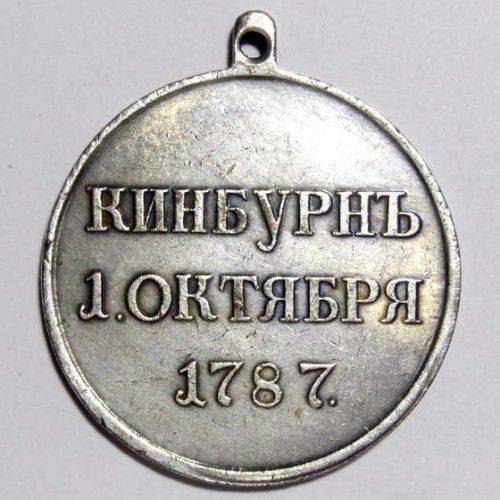
The next clash of the Russian Empire with the Ottoman Porto - the war of 1787 – 1791 - in its immediate result was not crushing for the latter, did not lead, as some hot heads in St. Petersburg and Vienna dreamed, to remove Turkey from Europe and create between it, on the one hand , and Russia and Austria - on the other, the buffer state - cobbled together from the dust of the times of Dacia. Territorial acquisitions were not so great, rather, the previous ones were finally consolidated.
The Kyuchuk-Kaynardzhi peace treaty 1774 of the year, according to which Russia received access to the Black Sea, irritated Istanbul, like a canister that had escaped to the softest place, and that was stuck there. In St. Petersburg, he only whetted his appetite. The Crimea, this long-term outpost of Turkey in the Northern Black Sea region, initially became formally independent. In fact, he was ruled by a Russian protege. Istanbul's attempt to intervene in local Tatar squabbles led to the fact that the Crimean Khan, though without much enthusiasm, surrendered to Russia not only with his soul, but also the whole territory: in 1783, the peninsula became part of the empire, becoming part of Tavrida. The construction of Sevastopol began, the urgent strengthening of the coast.
It was necessary to hurry, because the furious Turks were almost openly preparing for revenge, modernizing the army and navy with the help of foreign, mostly French, specialists. Moreover, this time in the West, they had much more than before, patrons, including in England, who did not want and was afraid of strengthening the Russian positions on the Black and Mediterranean Seas. True, Austria became an ally of Russia, although this colossus with clay feet soon showed its incapacity.
In August, 1787, Turkey put forward a number of provocative and obviously impossible requirements to Russia regarding the Crimea and the Caucasus, and then hurried to declare war, and, interestingly, not simple, but “sacred,” that is, “jihad.” The jihadists outlined for themselves the priority goal of Kherson, where the Russian shipyards were located. But first it was necessary to secure oneself from the flank, from the side of the Kinburn Spit with the fortress located on it.
More than five thousand troops under the protection of the guns of three battleships, four frigates, four floating batteries and fourteen gunboats, landed near Kinburn and dug in according to all the rules of engineering art taken from the French. The commander of the Russian troops in this sector of the coast, General-in-Chief Alexander Suvorov, outwardly did not get excited at all by the message about the actions of the enemy, even pointedly did not leave the church service (it was Pokrov day). The Russians, although inferior to the enemy in numbers, allowed the Turks to concentrate freely on the coast, let two hundred meters to their fortifications, then fired a volley and swiftly attacked.
The Janissaries at first mingled and retreated, but soon, having coped with the panic, they caught on the last lodgements remaining in their hands and even returned to some of those from which they had recently been knocked out. They were effectively helped by the powerful fire of the Ottoman squadron (about six hundred guns).
Suvorov, who was in the front row, was wounded with a canister on his left side and almost died by ridiculous chance: when a horse fell under him, he shouted to the Turks who were nearby, mistaking them for Cossack orderlies to give him another horse. It was not difficult to make a mistake, because the Cossacks at that time basically did not have a strictly established form and sometimes wore the most fantastic "oriental" attires.
The uniforms of their regiments in Tauris began only a few months later. The recognized commander was saved by the grenadier Stepan Novikov, who was nearby. Later, Suvorov described the actions of a soldier, “on whom the saber was already brought in,”: “Turchin blamed the bayonet, his comrade shot him, rushed one to thirty people”. Following a heroic example, the grenadiers and Cossacks drove the Turks again. It was six o'clock in the afternoon. And closer to midnight the coast was completely cleared of the enemy. Only a few of the Janissaries managed to return to their ships.
Until now, in the literature one can find the assertion that Novikov was a Yaroslav musketry. Confusion was brought once by Suvorov himself. Forgot, it happens. True, in 1912, justice triumphed: Novikov was the last of the warriors who were forever on the lists of his unit history The Russian empire of such heroes was eighteen), in this case - the 15 th Shlisselburg Field Marshal Anikita Repnin of the infantry regiment.
We did not succeed in tracing the fate of the grenadier after Kinburn. We can, however, assume that Novikov gave his life in the military arena, since during the roll call, the Schlesburgers of the beginning of the last century had to respond in chorus, hearing his name: "He died the death of a hero."
Be that as it may, it is reliably known that the award of the “miracle hero” (Novikov, by the way, was so tall that he was right-flank in his division) managed to get even during the life of Grigori Potemkin himself, the Most High Prince and Commander-in-Chief of the Yekaterinoslav Army .
It was a silver medal "For the victory at Kinburn". Its design (medalist - Timofey Ivanov) is quite ordinary, with the profile of the empress on the front and three-line inscription on the reverse side: "KINBURN - 1 OCTOBER - 1787".
It was intended to be worn on the St. George ribbon. The exclusivity is given to it by a small number of copies, only two dozen - a unique case for Russian award-winning soldier's medals, usually issued to all the lower ranks of the polls. Only one such medal has survived to our time.
What is interesting, the warriors themselves should have determined the worthy rewards. Transferring the medal to Suvorov, Potemkin said that he had handed Novikov one medal personally, while he ordered the rest nineteen to dispose of it as follows:
"Divide six into infantry, cavalry and Cossacks, and give one to the artilleryman ... who blew the shebek ... it wouldn’t be good enough to summon you several or ask whole regiments who the soldiers would deserve between themselves to receive the medal."
The gunner who blew up the Turkish shebek was gunner-Schlesselburger Mikhail Borisov.
Taking this opportunity, let's call the rest:
Shlisselbursky infantry regiment Grenadiers Sydor Loginov and Ivan Belaya; Orlovsky - Private Parfen Lukutin; Kozlovsky - Private Gleb Zvyagintsov; Murom Light Battalion Private Karp Loshkin and Trofim Novikov (S. Novikov's namesake).
In the light-shelled shelves: Mariupol Vakhmistr — Gavrila Lazaretsky, Corporal Ivan Gorenov, Private Ivan Svechkar; Pavlogradsky - Corporals Andrei Mankov, Peter Kholodov and Private Procopius Bezhovchoy.
The regiments of the Don Cossacks Ivan Pavlov, Danila Kondrashov, Vasily Borisov, Vlas Smetannikov, Ivan Chachasov and Yeremiy Semiletov.
If there were a little more medals, there could well be another name on this list: Dmitry Kuteynikov. The fact is that under the curtain of the battle, Suvorov received a second wound - a bullet pierced right through him, and another Russian soldier, or rather, a Cossack - Chief Kuteynikov 2, who washed and bandaged the wound, immediately came to the aid of the commander. Recently, in a modern historical novel, we happened to read that Kuteynikov allegedly died in the same battle.
Sad of course.
However, anyone who visited the Hermitage’s Military Gallery could easily admire the excellent portrait of George Doe hanging there, among others: a colorful Major General with a lush mustache, 2 th, waving himself in a portrait with a saber! Alive and healthy.
Yes, the Cossack safely emerged from that battle, as then from many others. He smashed the Poles, the French. And again the Turk. In World War II he fought near Smolensk, on the Borodino field, drove Napoleon out of Russia. He received the Order of St. George two of the most militant, IV and III degrees, the Order of St. Anne I degree. He served in the 1830-x to the general from the cavalry. This is how highly Suvorov's “wonder-heroes” hurriedly “buried” in fiction have stepped in!
By the way, she found a brave cavalryman the reward for Kinburn, “for Suvorov” - a nominal gold medal.
On the other side of the Dnieper-Bug estuary, opposite the Kinburn Spit, is Ochakov, while the foremost Turkish outpost. He became the target of the Russian offensive in the next campaign, 1788. At the same time, it was required to clear the Ochakov waters from a strong Turkish squadron. Galley rowing brilliantly dealt with this task. flotilla under the command of Prince Charles Henry (or, in the German manner, Karl Heinrich) Nassau-Siegen.
The prince was a remarkable person. Born in Germany, brought up in France, served in Spain, where he won the grand and general rank of the king, participated in Louis Bougainville circumnavigation, married the Polish princess and lived with her in Warsaw (one of the streets there still bears his name ), compiled for the Poles, ostensibly for trade purposes, a detailed map of the Dniester estuary.
Then, in 1886, he found himself in Russia, thanks to the patronage of Potemkin, he was promoted to rear admirals, and in two years he managed to learn only two words in the Russian service: “forward” and “rowing”, and pronounced them with such a Westphalian accent that the sailors called his eyes "Pie with mushrooms". But the rear admiral knew his sea business perfectly, and he also had an extraordinary determination.
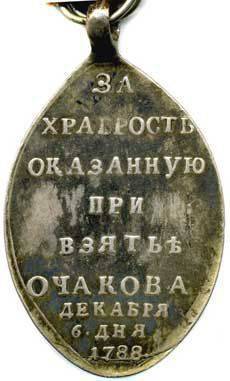
In three June clashes in the estuary, his rowing fleet destroyed several enemy battleships and frigates. As a result, “for the great courage 1788 of June 7 of the day he showed on the Ochakov Liman Turkish sea power, commanded by Captain Pasha and winning the famous victory under him”, Nassau-Siegen received the next rank and Order of St. George of the II degree (later he became Andreev's cavalier), and his subordinates got medals, obverse identical kinbursky and also worn on the St. George ribbon, with an inscription on the reverse: "FOR - BRAVEN - FOR WATER - OCHAKOVSKY - JUNE 1788".
Now the Russians have besieged Ochakov from all sides. It was time to go on the assault, but the commander in chief Potemkin showed hesitancy. Started, according to the caustic remark of Field Marshal Peter Rumyantsev, the hero of the previous Russian-Turkish war, a new siege of Troy. In July, Potemkin had a serious clash with Suvorov, at his own risk and provoking a Turkish raid on the shoulders of the retreating to break into the city. This attempt was not supported and therefore had no success, only caused an irritated remark from the biased Potemkin-set Empress:
"You heard, the old man, rushing without demand, lost the man to 400 and was wounded himself: he was certainly drunk."
But these losses, exaggerated by the same envious prince, should have seemed a trifle compared to those that the army suffered in the fall, and not so much from enemy attacks, as from poorly organized supplies and autumn weather, when the soldiers had to day by day after the month to hang around in rainy earthworks.
And then frost struck ... The Turks suffered no less, their stocks were almost exhausted; the forces of the garrison were melting away, and it was no longer necessary to count on outside help after the loss of the fleet in the estuary. Finally, the December 6 (17) storm began in a blizzard and fierce cold. Ochakov fell. The battle at the bastions ended in a terrible bloodshed in the city.
Potemkin received the I degree of “St. George” and a personal medal, Suvorov received a diamond pen on his hat (for comparison: for Kinburn, besides the letter “K” showered with diamonds, he received the highest Russian award, the Order of St. Andrew the First Called).
Other generals and officers were granted orders to whom, like Mikhail Kutuzov, “Vladimir”, II degree and “Anna”, I degree (Mikhail Illarionovich, in the August outing of the Turks, was again heavily wounded by an artillery battery in the already mutilated right eye), others were cruciform “ gold marks for wearing in a buttonhole on a tape with black and yellow stripes ”(we will tell about this type of awards in more detail in one of the following articles).
The share of the lower ranks, as usual, accounted for medals: on the oval obverse the monogram of Catherine II under the imperial crown, below - laurel and palm branches, tied with a ribbon. On the back side there is an inscription in nine lines:
"FOR - BRAVE - PROVIDED - AT - TAKEN - OCHAKOVA - DECEMBER - 6 OF THE DAY - 1788".
Wearing this silver medal, as well as the gold officer's badge, was relied on the ribbon of the St. George Order.
In January, the 1789 Corps of Lieutenant-General Yuri Bibikov launched an attack on Anapa. Poorly organized, it ended in shameful failure and was accompanied by great losses for the Russians.
However, with a view to moral and psychological soldiers (those who survived after an unsuccessful assault on Turkish fortifications and attacks by hostile mountaineers), who, as stated in the rescript, “... despite unspeakable difficulties and the very hunger, with diligence and patience, unparalleled, performed their duty ... ", they received, perhaps, the only award medals for failure, which happened, however, not their fault, - silver ovals with the monogram of the empress and the inscription on the reverse in three lines:
"FOR - TRUE - ST". And rightly so, in our opinion.
But soon after that, in the middle of summer and in the beginning of autumn, there was a reverse case, which did not do credit to the Russian government. Suvorov finally got rid of the custody of Potemkin, which he immediately took advantage of. One after another he dealt two defeats to the Turks - under Focsani on July 21 (September 1 ns) and especially crushing (not without the help of the Austrians, it must be admitted) on September XMNXX (11).
In the last battle, the Ottomans lost only at least 15 thousand people killed. Suvorov became the Count of Rymniki, the owner of diamond signs to the already available St. Andrew’s Order, a sword strewn with jewels with the inscription “Winner of the Vizier” (Yusuf Pasha), diamond epaulettes (one, not two) and a ring, the Order of St. George, I degree. Preparing to send all this, Catherine wrote to Potemkin: “... a whole diamond wagon has already been laid.”
With such generosity, glaring absurdity, especially after the consolation reward of Bibikov's troops defeated by Anapa, it seems that the lower ranks did not receive medals for Focsani, and even less for Rymnik. Not helped by repeated requests of the commander. Then Suvorov acted unusually and, in our opinion, very sublimely: the leader addressed his “miraculous heroes” with a thank-you speech, after which, as it was agreed beforehand, they crowned each other with laurel wreaths, like ancient heroes.
The following year, no one in St. Petersburg dared to ignore the exploits of the Russian soldiers during the capture of Ishmael. The storming of this “fortress without weak points” and the thorough preparation that preceded it, the historical literature reports in detail, therefore we confine ourselves here to the description of the award medal.
She was minted in the shape of an oval; on the obverse, there is a monogram under the crown, but for some reason without twigs (is it not a hint that the Fauchshan and Rymnik laurels were firmly lashed by someone's vanity?); on the reverse - an eight-line inscription: "FOR - CANCELED - BRAVE - WITH - TAKEN - IZMAIL - DECEMBER 11 - 1790".
Suvorov received a personal medal, the rank of lieutenant colonel of the Life Guards Preobrazhensky Regiment (instead of a fully deserved field marshal general; he became the eleventh Preobrazhentsy lieutenant colonel, the colonel herself was listed as the Empress) and ... translated into Finland, which looked like opal. His officers were given orders of gold weapon and gold crosses. And the glory of the winner of the Turks, along with the field-marshal's uniform and column in the Tsarskoye Selo studded with diamonds, went to Potemkin. However, time put everything in its place.
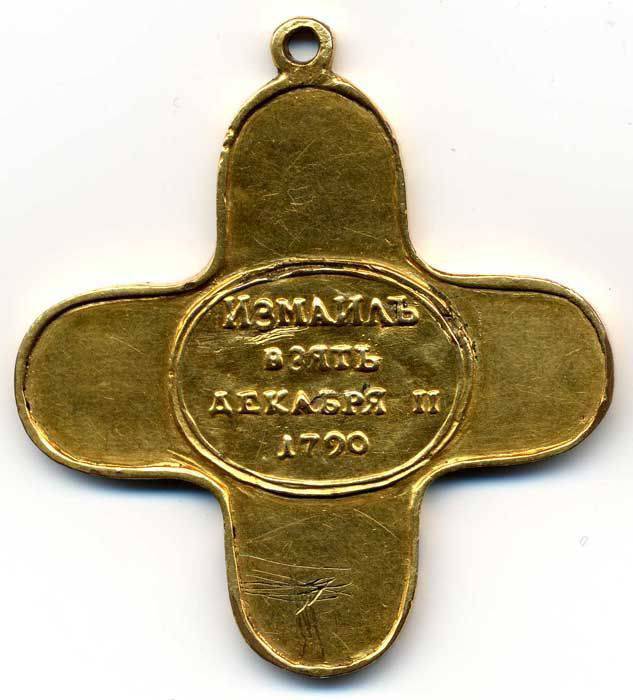
The Russian-Turkish war, after several more defeats of the Ottomans on land and sea, especially sensitive to Machin, from Prince Nikolai Repnin who replaced Potemkin and Fedor Ushakov from the Bulgarian cape Kaliakria (meanwhile in the Caucasus, Count Ivan Gudovich mastered the same unfortunate Anapa) the conclusion of the Yassky peace treaty in December 1791, which secured Crimea to Russia and moved the border with Turkey to the Dniester. Ochakov, despite all the efforts of the English premiere of William Pitt, was lost forever for Istanbul.
The Ottoman Empire was so devastated by the war that Catherine graciously forgave her a huge contribution to 12 million piastre (7 million rubles).
The Russian government, as if having come to its senses, made another wide gesture. All rank-and-file war veterans, soldiers and sailors, winners at Rymnik and Tendra, at Machine and Kaliakria, though with a great delay, were given award medals of the already familiar design - with the Empress's monogram on the obverse.
Only the five-line inscription on the reverse differed:
"POBE - DITELEM - AT PEACE - DECEMBER 29 - 1791".
The Manifesto of 2 September 1793 of the year said literally the following:
"Praising the brave deeds of the land and sea Russian troops, many and variously renowned, and loyalty to Her Imperial Majesty and Fatherland who overcame all difficulties, in memory of that service of them, to distribute to all the remembered troops who, in the campaign against the enemy, were from each person silver with a silver medal for wearing in a buttonhole on a blue ribbon. "
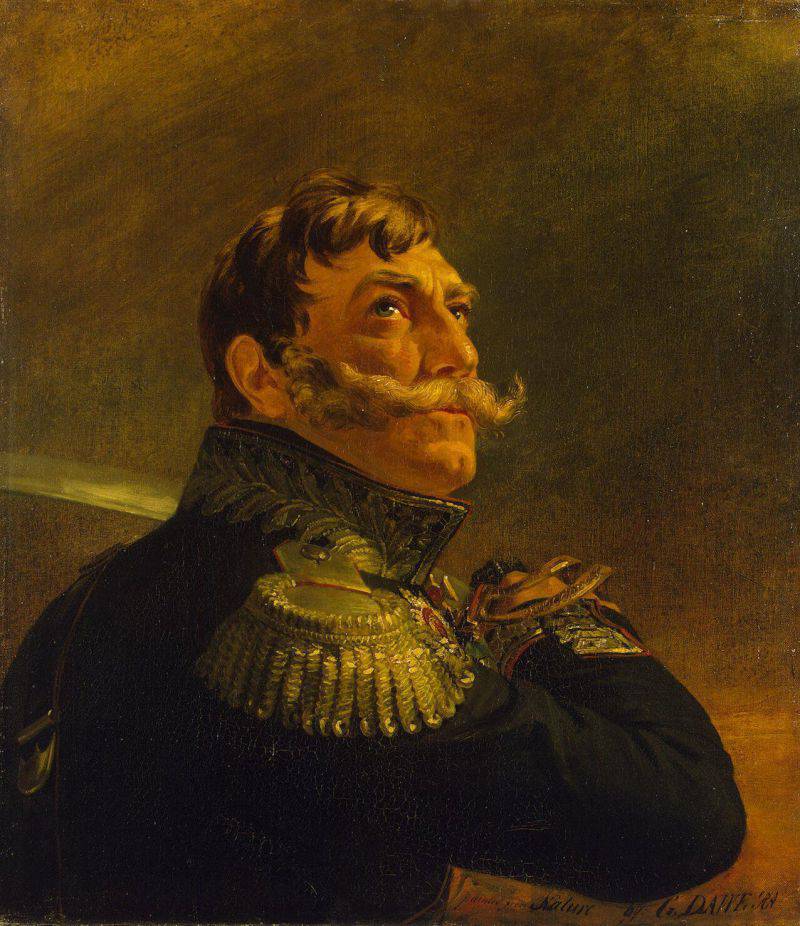
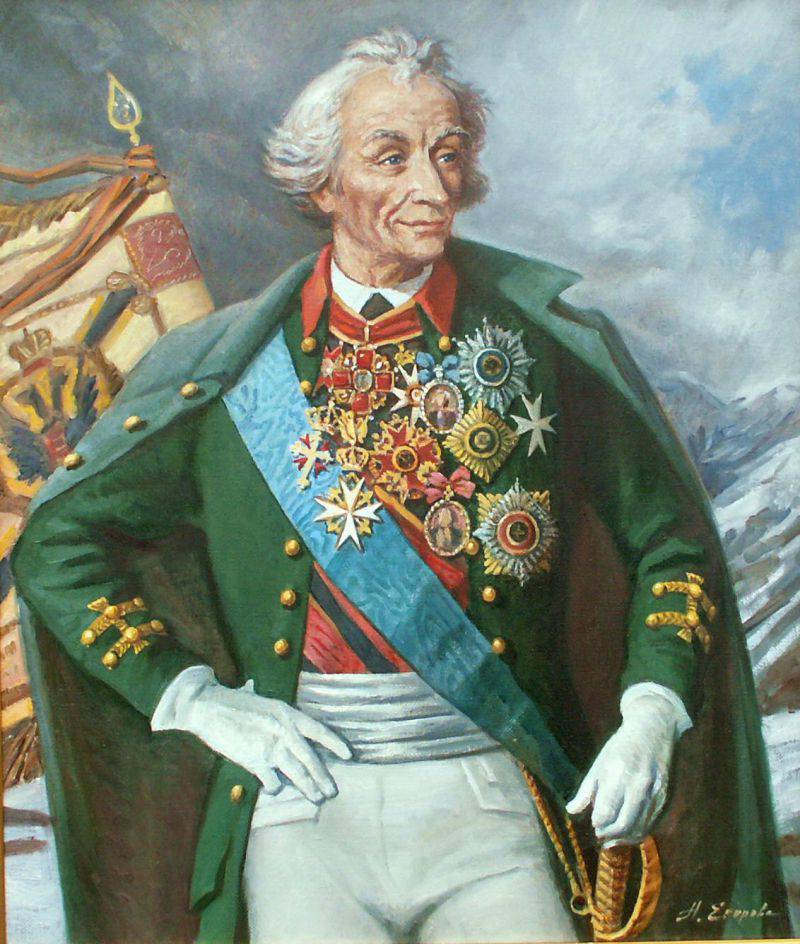
Information